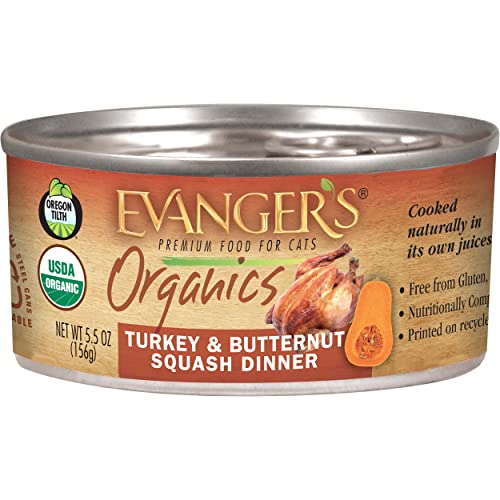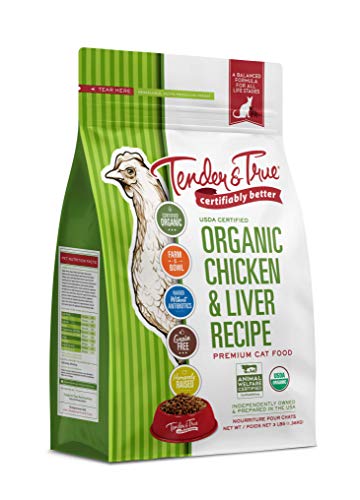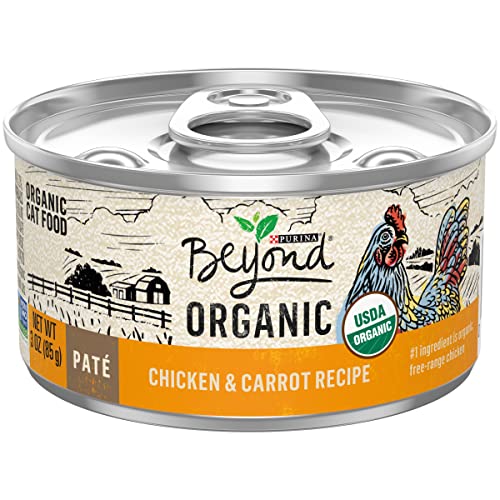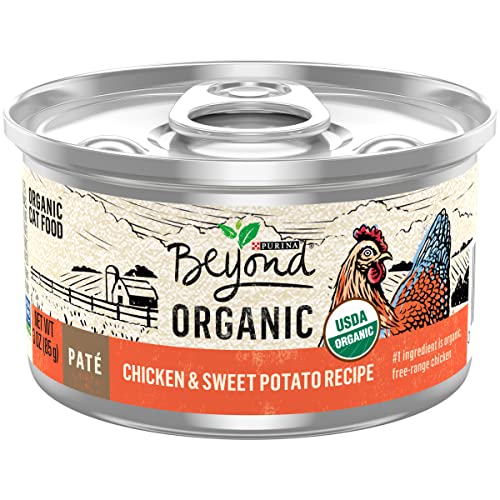Introduction
Cats are more than just pets; they're beloved members of our families, deserving of the best care possible. Central to their health and wellbeing is nutrition, making cat food a crucial aspect of responsible pet ownership. Just like humans, cats require a balanced diet to thrive, with specific nutritional needs tailored to their physiology and lifestyle.
In this comprehensive guide, we delve into everything you need to know about cat food. From understanding the nutritional requirements of felines to navigating the diverse array of cat food options available, we aim to equip you with the knowledge to make informed decisions about your cat's diet.
Join us as we explore the intricacies of cat nutrition, decipher cat food labels, discuss various types of cat food, and provide practical tips for selecting the right food for your furry friend. Whether you're a seasoned cat owner or considering adopting a feline companion for the first time, this article is your ultimate resource for understanding everything about cat food and ensuring the health and happiness of your beloved pet.
Understanding Cat Nutritional Needs
Cats are obligate carnivores, meaning their diets must primarily consist of meat to meet their unique nutritional requirements. Unlike omnivores, such as dogs or humans, cats have specific dietary needs that cannot be met solely by plant-based foods. Understanding these nutritional needs is crucial for providing optimal care for your feline friends.
Nutritional Requirements Specific to Cats
Cats require certain nutrients in their diet to support essential bodily functions, including protein, amino acids, fatty acids, vitamins, and minerals. Protein is particularly vital for cats, as it provides the building blocks for muscle maintenance, growth, and repair. Taurine, an amino acid found primarily in animal tissues, is essential for feline heart health and vision.
Essential Nutrients Cats Need in Their Diet
In addition to protein and taurine, cats require specific vitamins and minerals, such as vitamin A, vitamin D, calcium, and phosphorus, to maintain overall health and wellbeing. These nutrients play critical roles in supporting immune function, bone health, and various metabolic processes within the body.
Factors Affecting Nutritional Needs
The nutritional needs of cats can vary based on factors such as age, breed, health conditions, and lifestyle. Kittens, for example, have higher energy and nutrient requirements than adult cats due to their rapid growth and development. Similarly, senior cats may require diets tailored to support joint health and manage age-related conditions.
Understanding the unique nutritional needs of cats is essential for selecting appropriate cat food and ensuring that your furry companions receive the nutrients they need to thrive. In the following sections, we will explore different types of cat food and provide guidance on choosing the best options for your cat's specific needs.
Types of Cat Food
Choosing the right type of cat food is crucial for meeting your feline friend's nutritional needs and preferences. Cat food comes in various forms, each with its own benefits and considerations
Commercial Cat Food
Dry Cat Food (Kibble): Dry cat food is convenient, economical, and has a longer shelf life compared to other types of cat food. It can help maintain dental health by reducing plaque and tartar buildup through chewing. Look for high-quality dry cat food with named protein sources and minimal fillers or artificial additives.
Wet Cat Food (Canned): Wet cat food has higher moisture content than dry food, which can help prevent dehydration and promote urinary tract health. It often has a more palatable texture and flavor, making it suitable for picky eaters or cats with dental issues. Choose wet cat food with real meat as the primary ingredient and avoid those with excessive fillers or preservatives.
Semi-Moist Cat Food: Semi-moist cat food offers a middle ground between dry and wet food in terms of moisture content and texture. It is often more palatable than dry food but less messy than canned food. However, it may contain higher levels of artificial ingredients and preservatives, so choose options with natural ingredients and limited additives.
Homemade Cat Food
Pros: Homemade cat food allows you to have control over the quality and variety of ingredients in your cat's diet. It can be tailored to meet your cat's specific nutritional needs and preferences, especially if they have food sensitivities or allergies.
Cons: Homemade cat food requires careful planning and preparation to ensure it provides all the essential nutrients your cat needs. It may also be more time-consuming and expensive compared to commercial cat food. Additionally, homemade diets may lack the necessary balance of nutrients if not properly formulated.
Specialized Diets for Specific Health Conditions
Some cats may require specialized diets to manage certain health conditions or dietary sensitivities. These include
Prescription diets for cats with medical conditions such as kidney disease, diabetes, or urinary tract issues.
Weight management diets for overweight or obese cats, formulated to support healthy weight loss and maintenance.
Limited ingredient diets for cats with food allergies or intolerances, featuring novel protein sources and limited ingredients to reduce the risk of adverse reactions.
Understanding the different types of cat food available can help you choose the most suitable options for your cat's nutritional needs, preferences, and health considerations. Consult with your veterinarian to determine the best diet plan for your feline companion.
Reading Cat Food Labels
Deciphering cat food labels is essential for understanding the nutritional content and quality of the food you're providing for your feline companion. Here's a breakdown of what to look for when examining cat food labels
Deciphering Cat Food Labels
Cat food labels typically include information about the ingredients, guaranteed analysis, feeding guidelines, and nutritional adequacy statement. Understanding these components can help you assess the quality and suitability of the food for your cat's needs.
Ingredient Lists and Nutritional Information
The ingredient list on cat food labels provides insight into the composition of the food. Look for high-quality protein sources, such as meat, poultry, or fish, listed as the primary ingredients. Avoid foods with fillers, artificial additives, and unnecessary preservatives, which may be detrimental to your cat's health.
The guaranteed analysis section of the label specifies the minimum and maximum levels of crude protein, fat, fiber, and moisture in the food. Pay attention to these values to ensure that the food meets your cat's nutritional requirements.
Common Ingredients to Look for and Avoid
Quality cat food should contain high-quality protein sources, essential vitamins and minerals, and minimal fillers or by-products. Look for named meat sources (e.g., chicken, beef, salmon) and whole grains (if included) rather than generic terms like "meat by-products" or "animal digest."
Avoid cat foods that contain artificial colors, flavors, and preservatives, as well as ingredients that are potentially harmful to cats, such as excessive carbohydrates or high levels of sodium.
Role of AAFCO in Regulating Cat Food Labeling
The Association of American Feed Control Officials (AAFCO) sets guidelines and standards for pet food labeling in the United States. Look for the AAFCO nutritional adequacy statement on cat food labels, which indicates whether the food is formulated to meet the nutritional needs of cats at specific life stages (e.g., growth, maintenance, gestation/lactation).
By carefully reading and understanding cat food labels, you can make informed choices about the food you feed your cat, ensuring that it meets their nutritional requirements and contributes to their overall health and wellbeing.
Selecting the Right Cat Food
Choosing the right cat food is essential for ensuring that your feline friend receives the nutrition they need to thrive. Consider the following factors when selecting cat food for your pet
Factors to Consider
Age: Cats have different nutritional needs at various life stages. Kittens require higher levels of protein and calories to support growth and development, while senior cats may benefit from diets tailored to support joint health and manage age-related conditions.
Activity Level: Active cats may require more calories and protein to fuel their energy needs, while sedentary cats may need fewer calories to prevent weight gain.
Health Status: Cats with medical conditions or dietary sensitivities may require specialized diets prescribed by veterinarians to manage their health effectively.
Ingredient Quality: Choose cat food with high-quality protein sources, such as meat, poultry, or fish, listed as the primary ingredients. Avoid foods with fillers, artificial additives, and unnecessary preservatives.
Texture and Palatability: Consider your cat's preferences for wet, dry, or semi-moist food textures. Some cats may have dental issues or be picky eaters, so offering a variety of textures can help ensure they receive adequate nutrition.
Brand Reputation: Research cat food brands and their reputations for quality, safety, and transparency in sourcing and manufacturing practices.
Understanding Different Brands
Premium Brands: Premium cat food brands often use high-quality ingredients and undergo rigorous testing to ensure nutritional balance and safety.
Veterinary Recommended Brands: Some cat food brands are recommended by veterinarians for specific health conditions or dietary needs.
Budget-Friendly Brands: Budget-friendly cat food brands offer more affordable options without compromising on essential nutrients, although ingredient quality may vary.
Transitioning Cats to New Food
When switching your cat to a new food, introduce it gradually over 7-10 days by mixing small amounts of the new food with their current food. Monitor your cat for any signs of digestive upset or food aversion during the transition period.
Troubleshooting Common Feeding Problems
If your cat experiences feeding problems such as food allergies, digestive issues, or weight management challenges, consult with your veterinarian for personalized dietary recommendations and solutions.
By considering your cat's age, activity level, health status, and preferences, you can select cat food that meets their nutritional needs and promotes their overall health and wellbeing. Regularly assess your cat's body condition and adjust their diet as needed to ensure they maintain a healthy weight and thrive throughout their lives.
Frequently Asked Questions and Conclusion
Addressing Common Concerns about Cat Food
Raw Diet: Some cat owners consider feeding raw diets to mimic a cat's natural diet. However, raw diets can pose risks of bacterial contamination and nutritional imbalances if not prepared properly. Consult with a veterinarian before transitioning your cat to a raw diet.
Vegetarian Diets: Cats are obligate carnivores and require nutrients found only in animal-based proteins. While it's possible to formulate vegetarian diets for cats, it requires careful planning and supplementation to ensure they receive essential nutrients such as taurine and vitamin A.
Grain-Free Diets: Grain-free diets have gained popularity in recent years, but not all cats benefit from avoiding grains. Grain-free diets may still contain carbohydrates from other sources and may lack essential nutrients found in whole grains. Consult with your veterinarian to determine if a grain-free diet is appropriate for your cat.
Recap of Key Points Discussed in the Article
Cats have unique nutritional needs as obligate carnivores, requiring high-quality protein sources and essential nutrients for optimal health.
Different types of cat food, including commercial, homemade, and specialized diets, offer various benefits and considerations.
Reading cat food labels allows you to assess the quality and nutritional content of the food, ensuring it meets your cat's needs.
Factors such as age, activity level, health status, and ingredient quality should guide your choice of cat food.
Transitioning cats to new food should be done gradually to prevent digestive upset, and consulting with a veterinarian is essential for addressing feeding problems.
Encouragement for Cat Owners
Providing your cat with a balanced and nutritious diet is essential for their health and wellbeing. By understanding their nutritional needs and making informed choices about their food, you can ensure that your feline companion lives a happy and healthy life.
In conclusion, cat food plays a vital role in supporting the health and longevity of our beloved feline friends. By considering their individual needs and preferences, as well as staying informed about proper nutrition and feeding practices, we can provide the best possible care for our cats. Remember to consult with your veterinarian for personalized dietary recommendations and guidance on ensuring your cat's nutritional needs are met.







